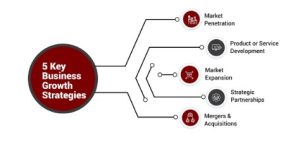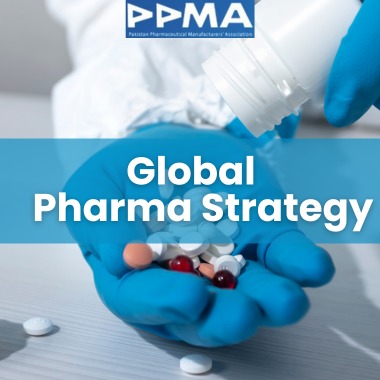Pharmaceutical Export is becoming a vital engine for economic growth. For many nations, including Pakistan, pharma exports hold strategic value. As international healthcare demands grow, opportunities widen in the global pharma trade. However, sustainable growth needs structured planning and smart execution. That’s where pharmaceutical export strategy becomes essential.
The Pakistan Pharmaceutical Manufacturer Association (PPMA) supports frameworks for export reform. This momentum promises greater international reach and foreign earnings. Let’s now explore the five key strategies leading this transformation.
Strategy 1: Strengthening Regulatory Compliance for Global Markets
No pharmaceutical export succeeds without meeting global regulatory standards. Compliance builds trust, credibility, and eligibility in the pharmaceutical export destinations. Countries require medicines to be certified under WHO, FDA, or EMA regulations.
Pharmaceutical trade regulations are vital to maintaining product quality and protecting patient safety. Thus, aligning with international protocols is non-negotiable. The Pakistan Pharmaceutical Manufacturer Association (PPMA) continuously promotes these reforms.
Implementation Tactics
- Conduct regular GMP (Good Manufacturing Practice) audits
- Align internal SOPs with global compliance frameworks
- Train teams on regulatory documentation requirements
These practices enable Pakistani pharma exporters to unlock regulated markets and reduce rejection risks.
Strategy 2: Diversifying Export Markets Through Data and Partnerships
Expanding Pharmaceutical Export Opportunities via Market Intelligence
Market diversification protects businesses from geopolitical and financial volatility. To boost pharmaceutical export growth trends, companies must target multiple geographies.
Data-driven decisions support strategic market entry in Asia, Africa, and GCC countries. Meanwhile, local partnerships enable faster penetration.
Tactical Suggestions
- Conduct country-specific demand analysis for medicine categories
- Join B2B matchmaking events and trade fairs abroad
- Use export intelligence tools like ITC Trade Map or WTO database
By doing so, firms uncover pharma export infrastructure gaps and meet international demand effectively.

Strategy 3: Leveraging Technological Advancements in Manufacturing
Role of Innovation in Boosting Pharma Trade Development
Technology directly enhances pharmaceutical manufacturing efficiency and safety. Using smart equipment streamlines compliance and increases productivity.
Automation ensures consistency, while digital tracking improves traceability. The Pakistan Pharmaceutical Manufacturer Association (PPMA) is facilitating sector-wide technology adoption.
Innovative Practices to Consider
- Implement ERP and automation systems in production lines
- Adopt serialization and barcoding for track-and-trace solutions
These technologies are foundational for building a reliable pharmaceutical export promotion council structure.
Strategy 4: Enhancing Trade Facilitation and Policy Support
Government-Led Initiatives for Pharmaceutical Export Incentives
To grow exports, supportive trade policies are essential. Pakistan has introduced several schemes and tax benefits to support pharma exporters.
The launch of PharmEx Pakistan Export Council is one example. It functions to simplify export procedures and foster global market access.
Suggested Government Actions
- Strengthen the export facilitation desk within ministries
- Introduce one-window clearance system for pharma shipments
- Offer tax holidays and financial aid for small exporters
Such policies reduce red tape and accelerate pharmaceutical export strategy execution.
Strategy 5: Building Human Capital and Public-Private Collaboration
Training and Knowledge Sharing for Long-Term Export Gains
The pharma industry’s future depends on its skilled workforce. R&D, compliance, and operations all require capable professionals.
Public-private initiatives led by institutions like PPMA improve capacity. Collaborative training and certifications close major gaps.
Ways to Build Human Resource Capabilities
- Develop export-focused training with local universities
- Offer international certification scholarships
- Conduct compliance seminars and e-learning sessions
These efforts build sector-wide competence in handling complex pharmaceutical export challenges.

Reports Validating Pakistan’s Export Potential
Several industry reports underscore the sector’s export readiness:
- Business Recorder: Pharma Exports Surge in FY2024
- Pharma Board Vision 2030 Document (Govt. of Pakistan)
- Trade Development Authority Pakistan Report on Pharma Potential
These reports highlight market readiness, technology potential, and export facilitation opportunities.
Pharma Regulatory Reforms for Efficiency & Transparency
The Pakistan Pharmaceutical Manufacturer Association (PPMA) welcomes Transparency International Pakistan’s recent call to improve regulatory processes in the pharmaceutical sector. PPMA sees this as a constructive step toward enhancing efficiency, speeding up product approvals, and ensuring timely patient access to quality medicines.
Conclusion: Tapping the Global Pharma Export Opportunity
The journey of Medicine Companies in Pakistan toward global excellence has begun. Through compliance, innovation, policy reform, and collaboration, these firms can lead the pharmaceutical export market.
With guidance from institutions like the Pakistan Pharmaceutical Manufacturer Association (PPMA), the future looks promising. Stakeholders must now act with urgency and unity.


